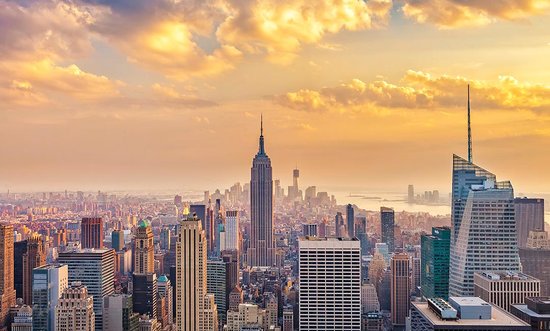Health and Justice Impacts:
- Higher temperatures cause dangerous pollution levels to soar, causing asthma attacks and other health problems, particularly in young children and the elderly. As temperatures rise, ground level ozone increases, which hurts developing lungs and can trigger asthma attacks. New York City already receives an F in ozone pollution levels from the American Lung Association.
- A warming climate causes heat exhaustion, heatstroke, and heart problems in addition to asthma, and heat-related mortality is expected to increase by 70% in New York by 2050. These impacts do not affect all equally, as low income families are less able to afford air conditioning and more likely to work in heavy labor. People living in counties with household incomes in the lowest 25% were twice as likely to die from weather extremes than those in the highest income counties.
- The effects of climate change will disproportionally hurt minorities and poor or otherwise vulnerable communities. For example, Black children are already four times more likely to die from asthma than White children, and Blackand Hispanic children are twice as likely to be hospitalized for asthma.
Heat Impacts:
- By 2100, a New York summer day is expected to be 92˚F, up 10 degrees F from the current average. That’s about the same temperature as an average summer day in South Florida now.
- Subway platforms are expected to become “dangerously hot” as climate change continues, causing an increase in rider illness and stressing train infrastructure.
- New York is especially susceptible to heat increases from climate change due to the urban heat island effect. Already, New York can be up to 20˚F hotter than the surrounding rural area.
Flooding Impacts:
- Climate change leads to heavier rainfall in already-wet areas, because hotter air holds more moisture. In May 2014, New York experienced its 10th wettest day ever, with over five inches of rainfall. Precipitation is expected toincrease by 10% by 2050.
- Flooding from excessive rainfall can overwhelm sewage systems, creating a public health hazard. Already, one fourth of an inch of rain can overwhelm New York’s sewage system and send raw sewage into bodies of water. In 2013, almost 100 million gallons of partially treated or untreated sewage were discharged into New York rivers and shores. Residences and stores around the Gowanus Canal have repeatedly been affected by sewage overflows into their homes and basements.
- Sea level around New York City is expected to rise from 4 to 8 inches by 2020 and 11 to 24 inches by 2050. The high estimates go from 11 inches by 2020 to a 31-inch rise by 2050.
- Hurricane Sandy caused over 150 deaths (one third of which were New Yorkers), incurred damage estimated at $60 to $80 billion, wrecked 650,000 homes, and left 8.5 million people without power. Warmer oceans and air, and changes in global weather patterns are projected to cause more powerful and more frequent hurricanes in the North Atlantic.
- Even if hurricane intensity does not increase, higher sea levels increase the extent of flooding.
- Hurricane Sandy caused New York subways to close entirely for two days, with many far-reaching repercussions of closings and repairs. In the 2005 transit strike, city officials calculated that every day of MTA closures results in losses of over $300 million citywide.


